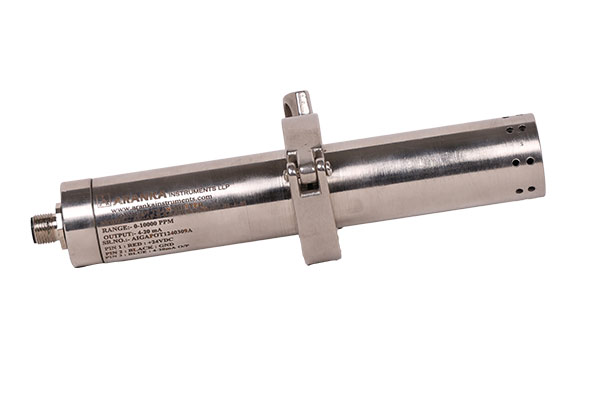Gas Sensor Transmitter Manufacturer
A gas sensor transmitter is a device that detects a target gas and converts that detection into a usable electrical signal (such as current or voltage), which is then relayed to a monitoring or control system. The process involves gas detection, transduction, and signal processing to produce accurate output. The AIRGA gas sensor transmitters from Aranka Instruments are engineered for precise response, robust performance, and flexibility in connections and sensor types. As a trusted Gas Sensor Transmitter Manufacturer and Supplier, Aranka Instruments offers high-quality solutions tailored to different gases, measurements, and industrial settings. Based in Gujarat, the company also functions as a prominent Gas Sensor Transmitter Manufacturer in Ahmedabad and Gas Sensor Transmitter Supplier in Ahmedabad, ensuring localized service and support.


Gas Detection:
- Gas sensor transmitter utilize various mechanisms to detect the presence of a target gas.
- Electrochemical sensors: These sensors react with the gas, causing an oxidation or reduction reaction at an electrode, generating a measurable current.
- Metal Oxide Semiconductor (MOS) sensors: These sensors detect changes in electrical conductivity when a gas interacts with the metal oxide material.
- Infrared (IR) sensors: These sensors measure the absorption of infrared light by the gas, which is related to its concentration.
Transduction:
- The physical or chemical change caused by the gas (e.g., change in current, resistance, or voltage) is converted into a measurable electrical signal.
- This conversion is called transduction.
Signal Processing:
- The sensor’s electrical output is then processed and calibrated to provide an accurate measurement of the gas concentration.
- This may involve amplifying the signal, filtering out noise, and converting it to a standard signal (e.g., 4-20mA) for transmission.
Transmission:
- The processed signal is transmitted to a monitoring or control system, which can be a local display, a data logger, or a more sophisticated control system.
- Transmitters are used to send this signal over a distance, often using wired or wireless communication methods.
Easy To Install.
24VDC Power.
Analog Isolated 4-20mA Output.
Customized Connection & Design.
Gas Type As per Requirement Can Design.
| Power Supply | 24VDC | |
| Gas Type | As per requirement | |
| Sensor Body MOC | S.S. 316 / S.S.304 / PTFE | |
| Analogue Output | 4-20mA | |
| Display | Blind / Local Display | |
| Transmitter Mounting | Local / Remote | |
| Communication | RS485 Modbus RTU | |
| Process Connections | DIN, ANSI Flanges, Tri-Clamp | |
CE Approved
ISO 9001 : 2025
Frequently Asked Questions (FAQs)
What is a Gas Sensor Transmitter?
A Gas Sensor Transmitter detects a specific gas (or mixture) and converts that detection into an electrical signal—typically current (4–20 mA) or voltage—for transmission to monitoring or control systems.
What kinds of output signals does it support?
It provides an isolated 4–20 mA analog output as standard.
What supply voltage is required?
The unit is powered by 24 V DC.
Does it support digital communication?
Yes, it can be equipped with RS-485 (Modbus RTU) communication for integration with PLCs, SCADA, or other control systems.
What materials are used for the sensor housing?
The sensor body can be manufactured in SS-316, SS-304, or PTFE depending on the application and environmental conditions.
Toggle tWhat process connections are supported?
The gas sensor transmitter can be provided with DIN flanges, ANSI flanges, or Tri-Clamp connections to suit different installation needs.
Is there a local display option?
Yes — the transmitter can be supplied as a “blind” version (no display) or with a local display, depending on the model.
In which applications is it typically used?
Common applications include gas leak safety monitoring, variable gas generation plants, hazardous gas sensing, combustion gas analysis, and explosive gas detection scenarios.

